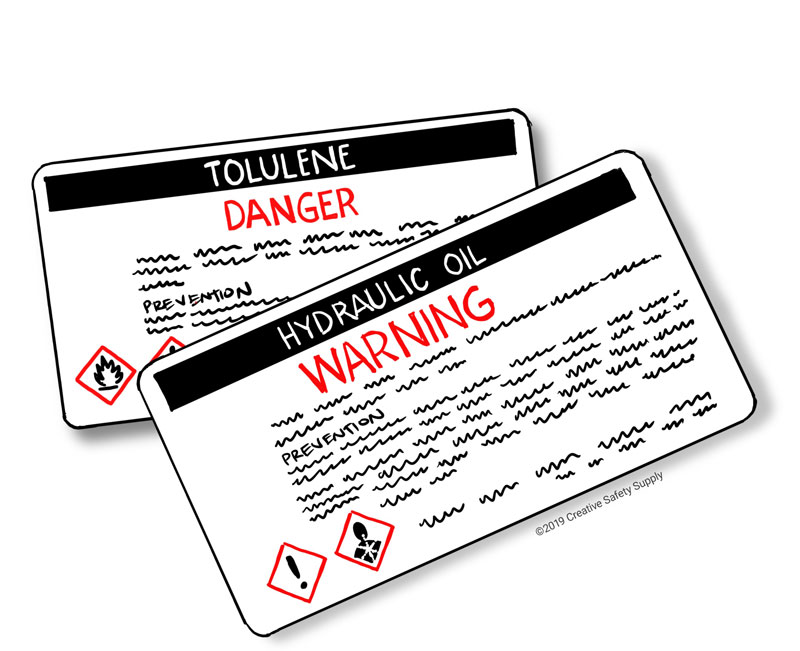
The GHS standard primarily uses pictograms to convey information about hazards related to chemicals. It is used around the world, which is why the pictograms are much more important than words or other methods of communication. That being said, GHS does have two signal words that can be used to help provide emphasis and inform people of the relative severity of the risks involved. The signal words will typically be accompanied by a hazard statement, which offers further details on the specific nature of the hazard.
Warning

The first signal word used in GHS is ‘WARNING.’ This should be written in bold lettering that is easy to see, and should have no other words of the same size and type located near it. The warning signal word means that the hazard associated with the chemical being labeled is less serious than other chemicals that have the other signal word on the label. That being said, however, it will still be a dangerous situation that needs to be taken seriously.
An accompanying hazard statement could be something like, “Flammable Liquid and Vapor.” These statements should be succinct and to the point. Keeping in mind that these labels are often used when shipping chemicals around the world so some people may not be able to read the text, or have a limited vocabulary in the language it is written in.
Danger
The second signal word used in GHS is ‘DANGER.’ This will use the same large bold lettering so that it is easy to see. In GHS, only DANGER or WARNING should be used as a signal word, but never both. Danger is used when the hazards related to the chemical in question are more serious than they would be with the warning word. A hazard statement that goes with the danger signal word may be something like, “Extremely flammable liquid and vapor.”
Choosing Signal Words
When creating GHS labels or signs it is important to choose the right signal words for the right situation. Also, not all GHS labels will require signal words. In many situations, simply having the right GHS pictograms is sufficient for conveying the risks associated with the chemicals being labeled.
Similar Questions
- How do I read GHS labels?
- Are GHS pictograms and hazard labels the same?
- When is GHS required?
- What is the GHS format?
- What are the two major elements in the Globally Harmonized System?
- How is GHS implemented?
- What is GHS labeling?
- Can GHS pictograms be black and white?
- Are GHS labels required?


